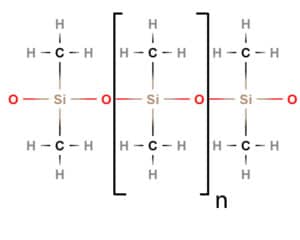We have so many encounters from people who are very eager to use the cheapest material for their projects. In selecting the sealant to use for their projects, some are very eager to buy an organic sealant due to its attractive pricing. However, sealants play a major role in construction as they are used to seal a gap to prevent water seepage or as a structural adhesive to bond two substrates together. Hence, selecting the cheaper sealant just to save upfront project costs and in turn become a severe headache in future repairs. In this article, we will explain why silicone sealants is the material of choice for our applications especially exterior.
[spacer height=”20px”]
The Two Types of Sealants
Broadly speaking, there are organic sealants and also inorganic sealant. Majority of the sealants we could probably buy from hardware store are organic sealants. However, for organic sealants we have silicones. Dow Corning sealants which is what Chain Glass sells are purely based on silicone chemistry.
[spacer height=”20px”]
| Organic Sealant | Inorganic Sealant |
| Polyurethane | Silicone |
| Polysulfide | |
| Mastics | |
| Acrylics | |
| MS Polymers |
[spacer height=”20px”]
Basic Sealant Chemistry
To understand the properties of sealants, we must look at their respective chemistry. Below is the structural formula of silicone sealant. This is also known as polydimethylsiloxane. The other structural formula is for polyurethane.

Silicone (Polydimethylsiloxane)
[spacer height=”20px”]

Polyurethane
[spacer height=”20px”]
As we can see, silicone are made up of Si-O bonds whereas polyurethane (organic) is are made up of C-C and C-O bonds. We have also listed down the bond energies of the following.
| Atomic Bond / UV | Bond Energy (KJ/mol) |
| C-O | ± 357 |
| C-C | ± 346 |
| Si-O | ± 452 |
| UV | ± 400 |
Silicone sealants are better a better than organic sealant because UV-ray (± 400 KJ/mol) is unable to break the Si-O bond (± 452KJ/mol) in silicone sealant. Whereas it is able to break the C-O bond (± 400 KJ/mol) and C-C bond (± 346 KJ/mol) in organic sealants. Hence silicone sealants are UV-resistant whereas organic sealants are not UV resistant. Note: UV stable as labelled by some organic sealants manufacturers are not UV resistant.
[spacer height=”20px”]
After long UV exposure
![]() The picture depicts what happens to silicone sealant (on the left) and polyurethane sealant (on the right) after it has been exposed to UV for years. The test was subjected to accelerated weathering. As you can see, the silicone sealant remains unchanged under UV, whereas organic sealant will degrade and exhibit crack especially when there is movement. In the case of weatherproofing sealant, water will eventually infiltrate the building through the cavity. If the organic sealant is rigid, it will chip the substrate where the organic sealant is adhered to. For the case of structural sealant, this can lead to loss of adhesion and the glass panels might fly off the building.
The picture depicts what happens to silicone sealant (on the left) and polyurethane sealant (on the right) after it has been exposed to UV for years. The test was subjected to accelerated weathering. As you can see, the silicone sealant remains unchanged under UV, whereas organic sealant will degrade and exhibit crack especially when there is movement. In the case of weatherproofing sealant, water will eventually infiltrate the building through the cavity. If the organic sealant is rigid, it will chip the substrate where the organic sealant is adhered to. For the case of structural sealant, this can lead to loss of adhesion and the glass panels might fly off the building.
[spacer height=”20px”]
Conclusion
Despite the price difference of organic sealants compared to silicone sealant, it is a wiser choice to go for silicone sealant. It will allow you to have an assurance and peace of mind that the sealant you’re using will not lose adhesion or cause water seepage due to UV degradation. Especially with Dow Corning sealants and the support that Chain Glass gives as a technical distributor, you can be assured that when it comes to sealant performance, you will be worry-free.
[spacer height=”20px”]
